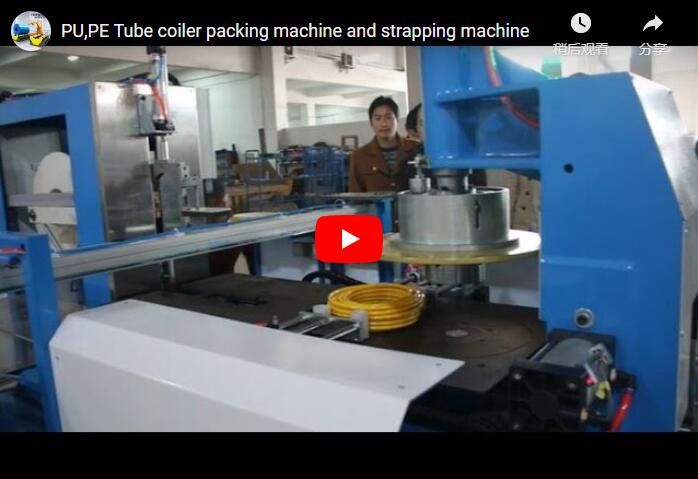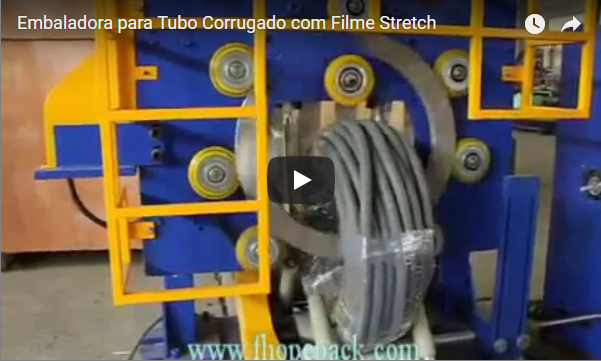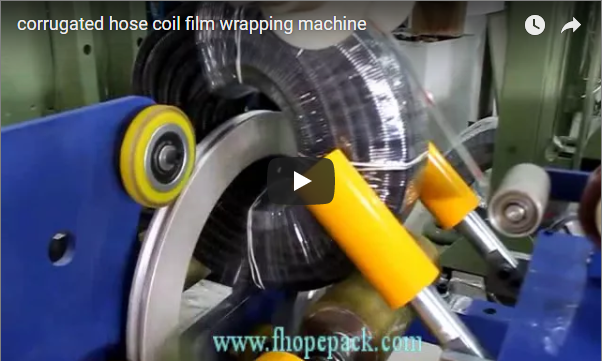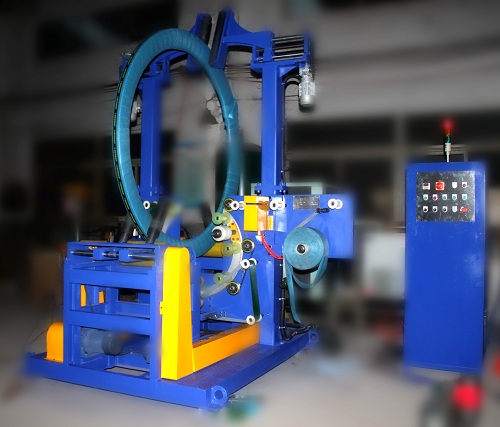Automated Coil Loading and Unloading: Enhancing Efficiency and Safety in Packaging Lines
Handling heavy industrial coils, particularly within demanding production and packaging environments, presents significant operational challenges. Manual or semi-automated processes often lead to inefficiencies, potential product damage, and, critically, increased risk of workplace injuries. Automated loading and unloading devices, specifically engineered for integration with coil wrapping machines, represent a leap forward, addressing these challenges through precision engineering and intelligent design – concepts frequently explored in material handling research and patents (e.g., patents focusing on robotic grippers and automated transfer mechanisms). This technology is pivotal for achieving optimal efficiency, safety, and operational continuity in modern industrial settings.
The Mechanics of Automated Coil Handling: How it Works
At its core, the automated loading and unloading device is a sophisticated electro-mechanical system designed for seamless integration into the packaging workflow. Drawing inspiration from advancements documented in industrial automation journals, these systems typically feature:
- Robust Framework: Constructed from heavy-gauge steel to withstand industrial environments and support substantial coil weights.
- Precision Actuation: Utilizing hydraulic, pneumatic, or servo-driven mechanisms (often detailed in engineering papers on actuator precision) for smooth, controlled lifting, tilting, and transferring of coils.
- Intelligent Control: Governed by Programmable Logic Controllers (PLCs) that orchestrate the sequence of operations, interfaced via Human-Machine Interfaces (HMIs) for ease of operation and monitoring.
- Sensor Integration: Incorporating proximity sensors, load cells, and optical sensors ensures accurate coil positioning, prevents collisions, and enhances overall system safety, reflecting best practices highlighted in automation safety standards.
The operational sequence typically involves the device securely receiving a coil (often from a conveyor, AGV, or coil car), lifting or tilting it as required, precisely positioning it onto the wrapping machine's rollers or shuttle, and subsequently unloading the wrapped coil safely onto an exit conveyor or designated area.
Enhancing Operational Efficiency and Throughput
The primary driver for adopting automated coil handling is the significant boost in operational efficiency. Industry case studies and performance analyses consistently demonstrate:
- Reduced Cycle Times: Automating the loading/unloading sequence drastically cuts down the time required compared to manual or forklift operations, directly increasing the throughput of the wrapping station.
- Minimized Downtime: Consistent and reliable automated handling reduces errors and potential jams, leading to greater uptime for the entire packaging line.
- Optimized Workflow: Seamless integration creates a continuous flow, eliminating bottlenecks often associated with manual transfer points. Research published in logistics and manufacturing magazines often quantifies such improvements in terms of coils processed per hour or per shift.
Prioritizing Operator Safety: A Design Imperative
Manual handling of heavy coils is a major contributor to musculoskeletal disorders (MSDs) and other workplace injuries. Automated systems effectively eliminate this risk, aligning with stringent occupational health and safety regulations (like OSHA guidelines and ISO ergonomic standards). Key safety enhancements include:
- Elimination of Heavy Lifting: The machine bears the full weight of the coil throughout the transfer process.
- Reduced Operator Proximity: Operators interact with the system via controls located at a safe distance.
- Integrated Safety Features: Standard inclusions like safety fencing, light curtains, emergency stops, and load monitoring interlocks prevent accidental operation or movement, as mandated by machinery safety directives (e.g., EN ISO 13849).
Key Features and Technical Specifications

Modern coil loading and unloading systems offer a range of features tailored to specific industrial needs:
- Load Capacity: Engineered to handle coils ranging from a few hundred kilograms to over 30 tonnes, depending on the application (e.g., steel service centers vs. wire manufacturers).
- Coil Size Compatibility: Designed with adjustable V-blocks, platforms, or specialized grippers to accommodate a wide spectrum of coil diameters (OD), inside diameters (ID), and widths. Patent literature often showcases innovative gripper designs for different coil types.
- Control System Integration: Advanced PLCs (e.g., Siemens, Allen-Bradley) with user-friendly HMIs, capable of integrating with plant-level Manufacturing Execution Systems (MES) for data exchange and process control.
- Drive & Transfer Mechanisms: Options include chain conveyors, powered roller conveyors, shuttle cars, and tilting mechanisms for precise and gentle coil handling.
- Customization: Designs can be adapted for specific layouts, coil orientations (eye-to-sky vs. eye-to-horizontal), and integration requirements.
Industry Applications and Versatility
The application of automated coil loading/unloading systems spans various industries where coil processing is prevalent:
- Steel and Aluminum Mills: Handling master coils and slit coils in processing and distribution centers.
- Wire and Cable Manufacturing: Transferring reels and spools efficiently.
- Automotive Stamping: Moving steel and aluminum coils within press feeding lines.
- Paper and Plastics: Handling large rolls of material.
The device's adaptability allows it to handle diverse coil materials and dimensions, making it a versatile asset across the manufacturing landscape.
The FHOPE Advantage: Engineering Expertise in Packaging Solutions
FHOPE, a recognized manufacturer of advanced coil wrapping machinery and a specialist in packaging solutions, brings extensive engineering expertise to the design and implementation of these critical handling systems. We partner closely with clients, leveraging insights from industry research and best practices to develop tailored solutions that enhance business operations. This machine is a testament to our commitment to increasing packing efficiency and reducing labor costs for our customers.
For more coil packing machine solutions, explore our offerings.
In conclusion, the loading and unloading device for coil wrapping machines is far more than a simple material handler; it is a strategic investment in efficiency, safety, and productivity. By integrating robust engineering, intelligent automation, and adherence to safety standards, these systems provide a reliable and effective solution for streamlining the demanding process of coil packaging in modern industry.






